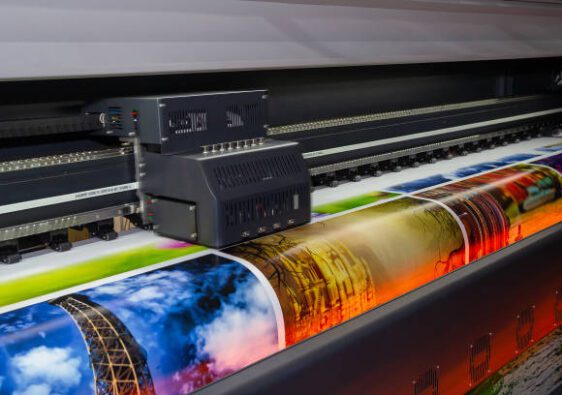In the world of industrial engineering, the choice of a power transmission system is crucial. These systems form the backbone of industrial machinery, facilitating the seamless transfer of energy. Yet, the selection process can be complex, with numerous options to consider.
The success of any industrial endeavor hinges on selecting the right technology, and power transmission is no exception. The right system can significantly boost efficiency, reliability, and cost-effectiveness. Conversely, an ill-suited choice can result in costly downtime and inefficiencies.
In this article, we will discuss the crucial factors influencing the selection of optimal power transmission systems for industrial applications.
Types of Power Transmission Systems
Power transmission systems come in various forms, each with its unique set of advantages and limitations. Gears and pulleys are the two most common components used in these setups.
According to Lambda Geeks, pulleys offer smooth, reliable power transfer over long distances, making them suitable for low-speed applications.
Gears, on the other hand, provide precise control over speed and torque, ideal for machinery that requires high precision and synchronization. Selecting the right type depends on your specific application needs and the trade-offs between speed, torque, and efficiency.
Load and Torque Requirements
Determining the load and torque requirements of your machinery is crucial for selecting the right power transmission system. Understanding these factors not only ensures smooth operation but also extends the lifespan of components.
Consider whether your equipment experiences constant or variable loads. This can impact the choice between systems designed for heavy, intermittent loads or continuous operation at a consistent torque.
According to Instrumentation Tools, constant loads are applications that need the same amount of driving torque throughout the operation. Variable loads need low torque at low speeds and high torque at high speeds. Properly assessing load and torque requirements ensures that your chosen system can handle the demands of your applications effectively.
Speed and Precision
The desired speed and precision of your industrial processes are critical considerations when selecting a power transmission system. Different transmission systems excel in various aspects of speed control and precision. High-speed operations may require systems that minimize backlash and provide smooth motion control.
In some cases, achieving the desired speed may require the use of speed-increasers, which can effectively boost the rotational speed of input sources. According to Cotta, these components allow for fine-tuned speed adjustments in your machinery. This ensures that your industrial processes meet the exacting speed requirements. Similarly, automating your systems and relying on bearing temperature sensors can further enhance the system’s performance by monitoring the temperature of bearings during operation. These sensors help detect any abnormal temperature increases, which can be indicative of underlying issues such as misalignment or inadequate lubrication. By integrating bearing temperature sensors, you can ensure that your machinery operates efficiently and safely, while maintaining the precise speed adjustments required for optimal industrial processes.
In some instances, meeting these requirements may necessitate the inclusion of specialized components such as a PTO speed increaser gearbox. These gearboxes are ingeniously designed to efficiently boost the rotational speed of input sources. When you require precise speed control or high-speed operations, consider the role of a PTO speed increaser gearbox. It can help you tailor your power transmission system to meet your specific speed and precision needs effectively.
Environmental Conditions
The environmental conditions in which your machinery operates can significantly affect the performance and longevity of your power transmission system. Extreme temperatures, exposure to moisture, and the presence of contaminants can accelerate wear and corrosion.
It’s essential to choose components that are specifically designed to withstand these conditions, ensuring reliable operation and minimizing downtime. Additionally, consider protective measures such as enclosures or coatings to enhance the system’s resilience in harsh environments.
According to Power Transmission Engineering, it is also crucial to apply lubricant to minimize wear and tear. In addition, you must also conduct regular preventive maintenance. This includes replacing worn-out components and calibrating them.
Cost Analysis
While budget constraints are a reality, it’s essential to look beyond the initial cost of the power transmission system. Calculate the total cost of ownership, factoring in maintenance, energy efficiency, and the potential for downtime.
A more expensive upfront investment in a reliable, efficient system can often lead to substantial savings in the long run. Keep in mind that focusing solely on initial cost savings may lead to higher operational expenses over time. Consider the long-term financial implications of your choice.
Future Expansion and Adaptability
Thinking ahead to future growth and changes in your industrial processes is vital. Consider whether the chosen power transmission system can be easily adapted or scaled up to accommodate evolving needs.
An adaptable system saves you from costly upgrades while ensuring that your machinery can keep up with changing demands in the dynamic industrial landscape. Prioritize systems that allow for modular expansion or integration of advanced technologies to future-proof your operations.
Final Word
Selecting the right power transmission system for industrial applications requires a thoughtful assessment of various factors. The choice between pulleys and gears should align with your speed, torque, and precision needs. Understanding load variability is essential for longevity and efficiency.
Environmental conditions demand components that can withstand the harshest settings, with proper maintenance being crucial. A holistic cost analysis, factoring in long-term expenses, is vital.
Lastly, considering adaptability and scalability ensures your system can evolve with your industrial processes. By carefully weighing these considerations, you can empower your industrial machinery for enhanced efficiency, reliability, and long-term cost-effectiveness.



